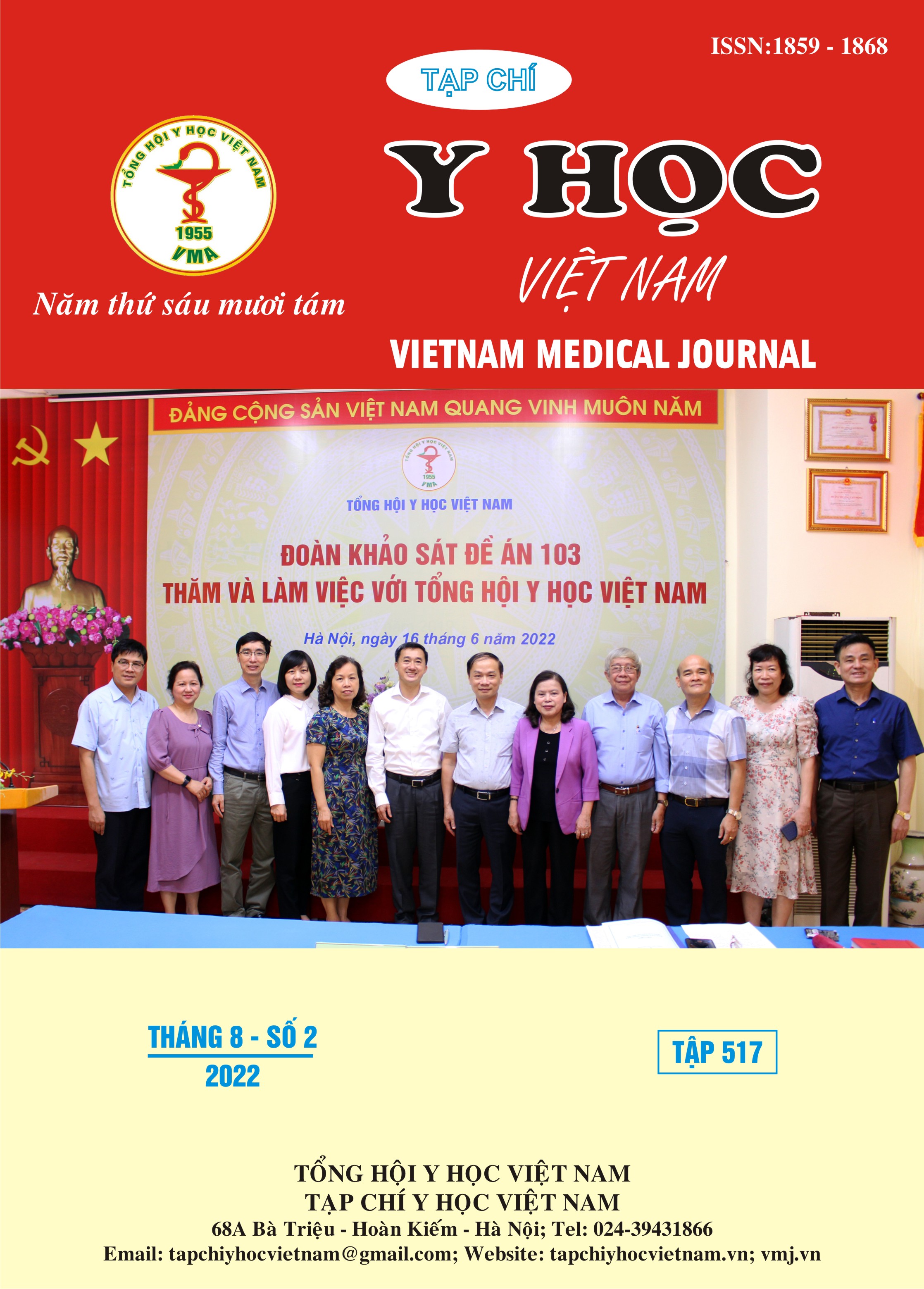CLINICAL AND LABORATORY CHARACTERISTICS, RESULT OF TREATMENT, AND PROGNOSTIC FACTORS OF OVARIAN CLEAR CELL CARCINOMA
Main Article Content
Abstract
Aims: To identify the clinical characteristics, the laboratory characteristics, the result of treatment, and the prognostic factors of ovarian clear cell carcinoma. Patients and methods: A retrospective combined prospective study. The patient diagnosed at Vietnam National Cancer Hospital, from January 2015 to June 2021 recorded clinical characteristics, laboratory characteristics, treatment methods and overall survival, and prognostic factors. Results: The median age at diagnosis was 56. The main presenting symptom was pelvic pain (91,3%), the main presenting sign was ascites (27,6%), most tumors were unilateral (93,1%), and their median largest diameter was 110mm. The rate of sensitive disease to adjuvant chemotherapy was 65,5%, response rate for stages I, II, and III was 100%, 83,3%, and 33,3%, respectively. Median survival was not reached for stage I and II patients, median survival was 11 months for stage III. The staging of disease was the main prognostic factor. Conclusion: Ovarian clear cell carcinoma shows distinct features compared to other epithelial ovarian cancers. The majority of patients with early stage had excellent survival but patients with advanced stage had a poor prognosis.
Article Details
Keywords
Ovarian clear cell carcinoma
References
2. Chan JK, Teoh D, Hu JM, Shin JY, Osann K, Kapp DS (2008). Do clear cell ovarian carcinomas have poorer prognosis compared to other epithelial cell types? A study of 1411 clear cell ovarian cancers. Gynecol Oncol,109(3):370-376.
3. Kurman RJ, Shih IM (2010). The Origin and Pathogenesis of Epithelial Ovarian Cancer- a Proposed Unifying Theory. Am J Surg Pathol, 34(3):433-443.
4. Behbakht K, Randall TC, Benjamin I, Morgan MA, King S, Rubin SC (1998). Clinical characteristics of clear cell carcinoma of the ovary. Gynecol Oncol, 70(2):255-258.
5. Lee HY, Hong JH, Byun JH, et al (2020). Clinical Characteristics of Clear Cell Ovarian Cancer: A Retrospective Multicenter Experience of 308 Patients in South Korea. Cancer Res Treat, 52(1):277-283.
6. Pozzati F, Moro F, Pasciuto T, et al (2018). Imaging in gynecological disease (14): clinical and ultrasound characteristics of ovarian clear cell carcinoma. Ultrasound Obstet Gynecol, 52(6):792-800.
7. Baek SJ, Park JY, Kim DY, et al (2008). Stage IIIC epithelial ovarian cancer classified solely by lymph node metastasis has a more favorable prognosis than other types of stage IIIC epithelial ovarian cancer. J Gynecol Oncol, 19(4):223-228.
8. Tang H, Liu Y, Wang X, et al (2018). Clear cell carcinoma of the ovary: Clinicopathologic features and outcomes in a Chinese cohort. Medicine (Baltimore), 97(21):e10881.
9. Pectasides D, Fountzilas G, Aravantinos G, et al (2006). Advanced stage clear-cell epithelial ovarian cancer: the Hellenic Cooperative Oncology Group experience. Gynecol Oncol, 102(2):285-291.
10. Cooper BC, Sood AK, Davis CS, et al(2002). Preoperative CA 125 levels: an independent prognostic factor for epithelial ovarian cancer. Obstet Gynecol, 100(1):59-64.


